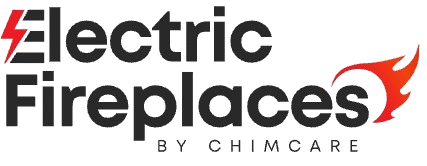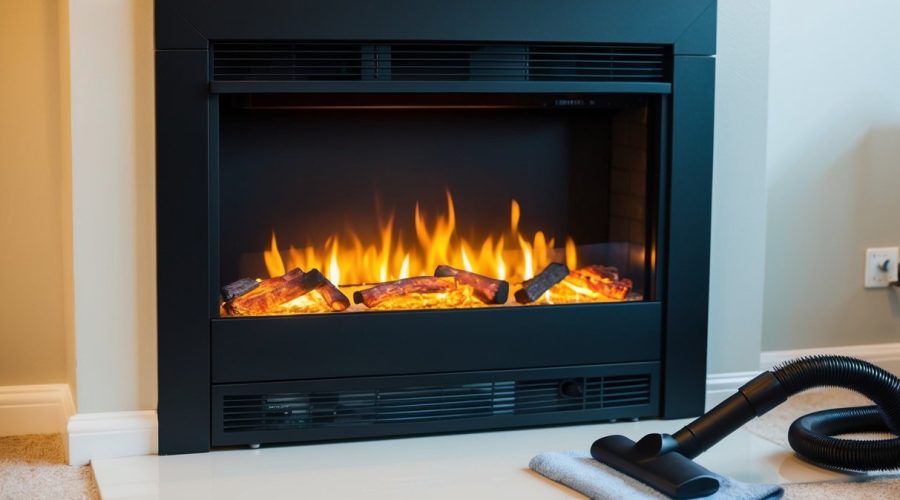Maintaining Your Electric Fireplace
Electric fireplaces are a popular choice for adding warmth and ambiance to any space with minimal maintenance. While they are designed to be low-maintenance, there are a few essential steps to keep them running efficiently. Regular upkeep ensures longevity and optimal performance of your electric fireplace.
We will explore practical tips and tricks to help you care for your electric fireplace and maintain its charm. From routine cleaning to troubleshooting common issues, staying informed can enhance the fireplace’s performance. Whether you are new to electric fireplaces or looking to refine your maintenance routine, these insights are tailored for you.
Key Takeaways
- Regular cleaning extends the fireplace’s lifespan.
- Proper installation boosts efficiency and safety.
- Troubleshooting can prevent common issues.
Understanding Electric Fireplaces
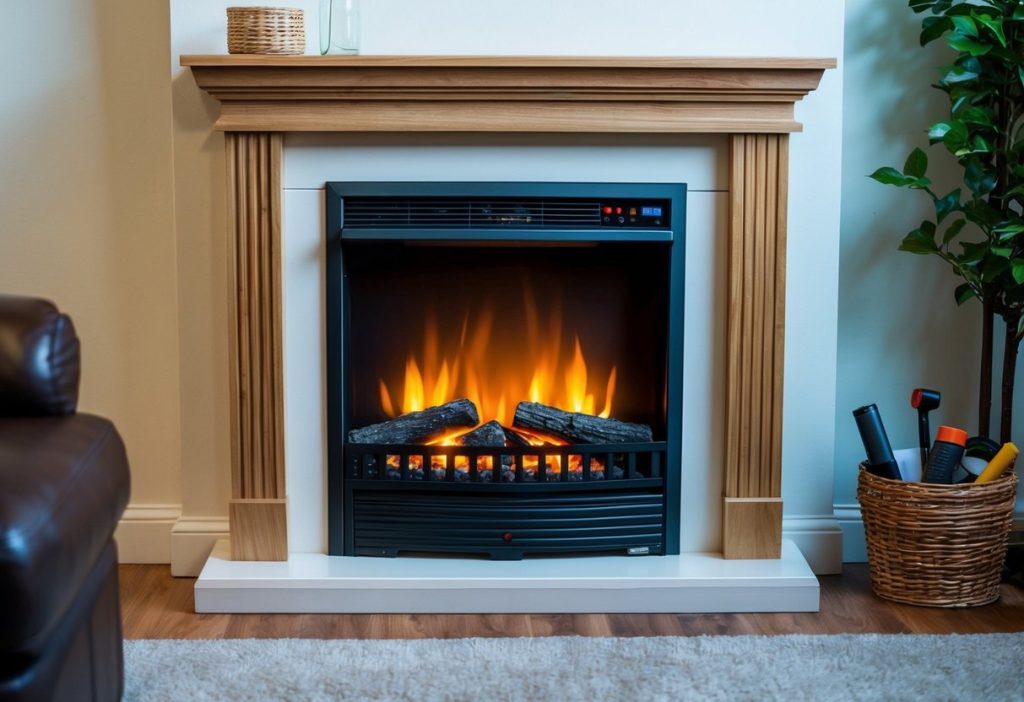
Electric fireplaces offer a modern solution that combines efficiency and style. We explore their various types and operation, equipping us with essential information to choose and maintain these innovative home features.
Types of Electric Fireplaces
There are several varieties of electric fireplaces, each serving different interior needs. Wall-mounted units are sleek and save space, ideal for contemporary homes. Insert fireplaces fit into existing mantels, providing a traditional feel without the mess of a conventional fireplace.
Freestanding fireplaces are versatile. They can be moved easily around our home. They often mimic the look of a wood-burning stove. Corner fireplaces fit into corners, maximizing space use in smaller rooms and adding ambiance. Each type offers distinct advantages suited to specific spaces and preferences.
How Electric Fireplaces Work
Electric fireplaces operate using heating elements and fans to generate warmth. Infrared technology is common, heating objects in the room rather than the air. This method ensures efficient and quick warmth, ideal for maximum comfort.
The visual flame effect comes from LED lights, creating a realistic fire appearance. We control the temperature and flame intensity with remote controls or digital panels. This makes them convenient and adjustable. Additionally, many models offer a no-heat option, allowing us to enjoy the aesthetic year-round without increased energy consumption.
Installation and Placement
Positioning an electric fireplace optimally can enhance its effectiveness and safety. We must consider both the ideal location and important safety guidelines to achieve the best setup.
Choosing the Right Location
Selecting the right spot for our electric fireplace is crucial. We should place it central to the room, ensuring it’s a focal point that distributes heat efficiently. Wall-mounted models can be ideal for compact spaces, whereas stand-alone units serve larger spaces well.
It’s important to keep it near a power outlet to avoid unsightly cords running across the room. Additionally, avoiding placing the fireplace under a window helps maintain consistent warmth, as windows can be a source of heat loss.
Safety Considerations
Safety is paramount when installing our electric fireplace. We must ensure it has a clear space around it, away from flammable items like curtains, furniture, and rugs. A minimum clearance of at least three feet is advisable for safety.
Using a dedicated electrical circuit is best to prevent overloading existing circuits. Regularly checking the cord and plug for wear is important to prevent electrical hazards. If mounting on the wall, it’s crucial to secure the unit properly, following the manufacturer’s installation guidelines to avoid accidents.
Routine Maintenance
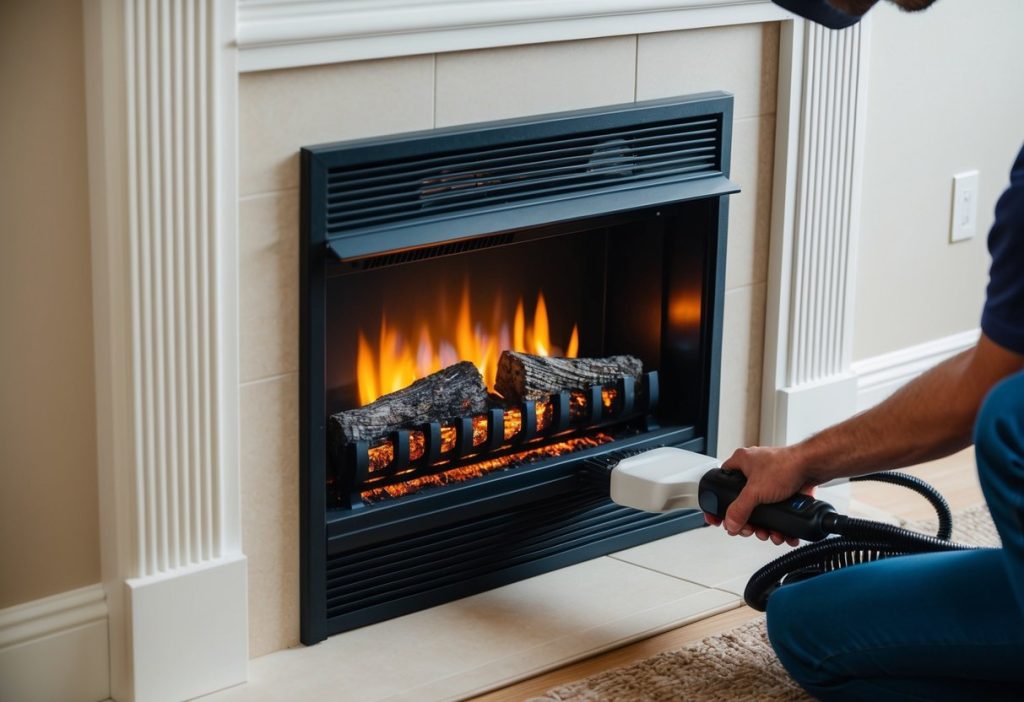
To ensure the longevity and performance of our electric fireplace, regular upkeep is vital. We’ll focus on cleaning the exterior and inspecting the heating elements as part of our routine maintenance efforts.
Cleaning the Exterior
We start by wiping down the outer surfaces with a soft, dry cloth to remove any dust. If there’s residue or fingerprints, a damp microfiber cloth works well with a mild detergent. Avoid using abrasive cleaners as they can damage the finish.
Regular cleaning prevents dust from accumulating and helps maintain the fireplace’s appearance. Pay special attention to vents and crevices where build-up occurs. Remember to turn off and unplug the fireplace first to ensure our safety.
Inspecting Heating Elements
Checking the heating elements is crucial for maintaining optimal performance. We should inspect these components every few months to spot any signs of wear or damage. Look for any unusual noises or odors while the fireplace is operating, as these may indicate an underlying issue.
If an element appears damaged, it may need replacing to ensure efficient heating. It’s wise to consult a professional if we’re unsure about the replacement process. Regular inspection helps us address potential problems before they escalate, keeping the fireplace functioning effectively.
Troubleshooting Common Issues
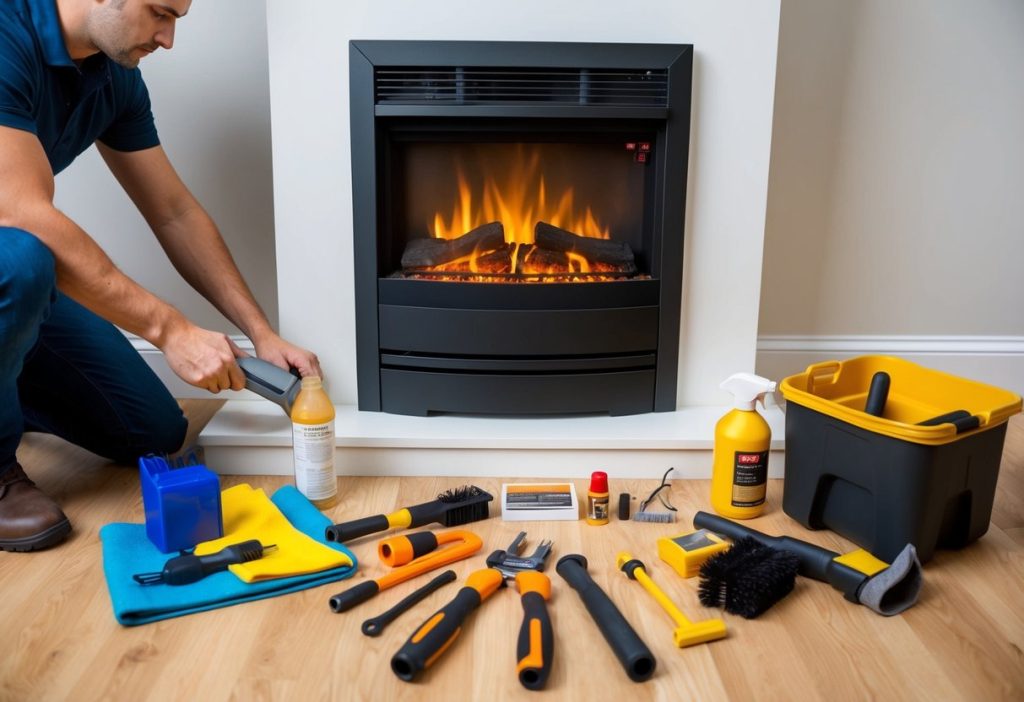
When our electric fireplaces encounter issues, it’s crucial to pinpoint the cause and address it effectively. This section covers heating problems and electrical connectivity fixes, providing practical steps to keep our units running smoothly.
Addressing Heating Problems
If our electric fireplace fails to produce heat, the first step is to ensure the thermostat is set correctly. Verify that it’s not set too low for our desired warmth. We should also check the circuit breaker to ensure it hasn’t tripped, which might interrupt heating.
Another common issue is a blocked air inlet. Dust or debris can obstruct airflow, reducing heat output. It’s important to regularly clean and vacuum the air vents. If we notice the fan is not operating when the heater is on, it could be due to a faulty motor or a mechanical issue, which may require professional service.
In some cases, the heating element might be defective. If cleaning and basic checks don’t resolve the heating issue, replacing the element may be necessary. Always ensure power is disconnected before attempting any repairs.
Electrical Connectivity Fixes
Proper electrical connectivity is essential for the fireplace to function. If our unit doesn’t turn on, check if it’s plugged in securely. Sometimes, loose connections can cause it to power off unexpectedly.
Inspect the power cable for any visible damage. A frayed or broken cable can interrupt the electric flow. If any damage is present, replacing the cable is advised to prevent hazards. Also, check if the fuse in the plug is intact and replace it if blown.
For fireplaces with remote controls, ensure the batteries are functioning and positioned correctly. If connectivity persists, reset any circuit boards as per the manufacturer’s guidelines. This often resolves glitches without requiring extensive technical intervention.
Enhancing Performance
To optimize the operation of our electric fireplace, we can focus on upgrading key components and adopting energy-efficient practices. These strategies will ensure smoother performance and can contribute to lower energy costs.
Upgrading Components
When considering an upgrade, installing a more advanced thermostat can improve temperature consistency. A digital model may offer better precision than older analog units. By maintaining a steady temperature, we can reduce the strain on heating elements and potentially extend their lifespan.
We can also upgrade the blower fan. A high-efficiency model can improve heat distribution, making our living space more comfortable. Additionally, upgrading the flame effect technology may enhance the visual appeal and realism of our fireplace.
Replacement Parts:
- Thermostat: Digital or programmable for better control.
- Blower Fan: More effective heat distribution.
- Flame Technology: Enhanced appearance and ambience.
Energy-Efficiency Tips
We should focus on minimizing energy consumption while maintaining comfort. Maintaining proper insulation in the room can significantly reduce energy demands. Sealing windows and doors prevents heat loss, allowing the fireplace to work more efficiently.
Utilizing the programmable features of our fireplace, like scheduled operation times, can help manage usage and reduce costs. Another tip is to harness ceiling fans to distribute warmth evenly, reducing the reliance on full power settings.
To further enhance efficiency, we can keep the fireplace clean and free of dust. This step ensures unobstructed air flow and optimal component function, preserving energy. Regular maintenance checks will also alert us to any parts needing attention, helping avoid wasted energy or potential issues.
Frequently Asked Questions
Maintaining an electric fireplace involves specific cleaning methods, timely bulb replacements, and ensuring proper operation. Safety is paramount, and routine maintenance is key to keeping it functional.
What are the best practices for cleaning the glass on an electric fireplace?
We recommend using a soft, lint-free cloth and a mild glass cleaner. Avoid using harsh chemicals or abrasive materials that could damage the glass. Allow the glass to cool completely before starting the cleaning process to prevent any damage.
How often should I replace the bulbs in my electric fireplace?
Bulb replacement depends on the manufacturer’s instructions and usage, but typically, they need changing every 2-3 years. It’s a good idea to keep an eye on the brightness level. If it dims noticeably, it might be time for a replacement.
Can I leave my electric fireplace on overnight?
It’s generally safe to leave an electric fireplace on overnight if it includes safety features like an automatic shut-off. We advise checking the manufacturer’s guidelines to ensure overnight use is safe for your specific model.
What should I do if my electric fireplace is not producing heat?
If your fireplace isn’t generating heat, first ensure it’s plugged in and the thermostat is set correctly. If these are not the issue, it might require professional servicing. Checking the manual for troubleshooting tips specific to your model can also be helpful.
How can I ensure the safety of my electric fireplace when it’s in use?
Positioning the fireplace away from flammable materials and not covering vents are essential safety steps. Regular inspections for frayed wires or unusual noises can prevent accidents. Using a dedicated outlet rather than an extension cord reduces electrical risks.
What steps are involved in the routine maintenance of an electric fireplace?
Routine maintenance includes cleaning the interior and exterior, inspecting electrical components, and replacing parts as needed. Regularly checking the remote controls and connections will ensure the fireplace operates efficiently. Keeping the unit dust-free helps maintain a pleasant appearance and performance.
